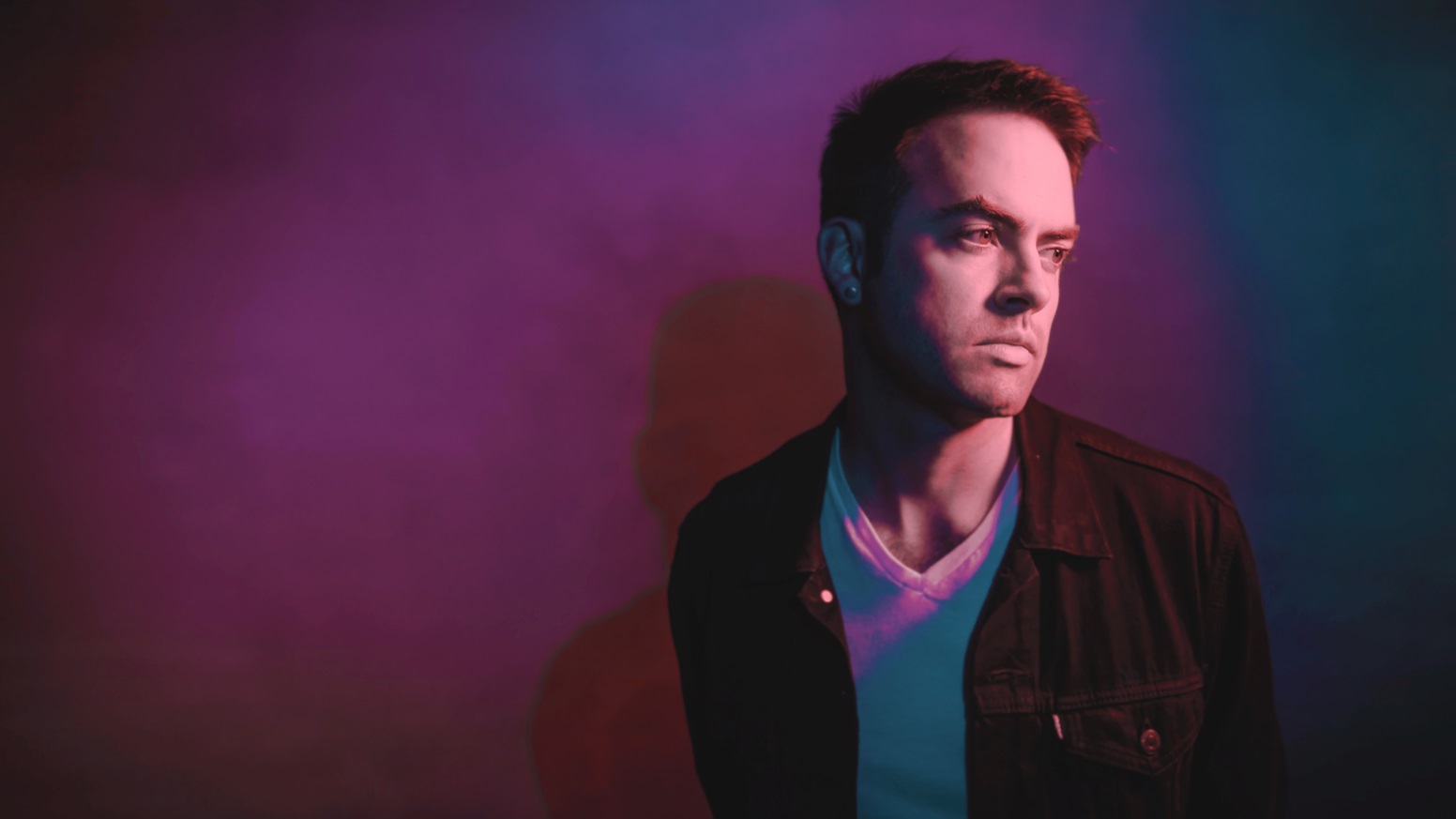Belgian artist Tamino’s sophomore album ‘Sahar’ touts an emotionally rich conglomerate of unique moments, separating itself from his debut in a way that maintains the gentle power of his unique artistry but shifts the way listeners have come to know his sound.
Stream: ‘Sahar’ – Tamino
This is a very reflective record where things that I thought I knew to be the truth became way more complex and deep as I grew a bit older, as I experienced them on a deeper level.
There are some artists, some very unique artists, whose work bleeds.
Their art doesn’t exist as this stagnant object, something simply observable that exists outside of the person perceiving it. It overflows in a way that seeps into its witnesses. Tamino is one of those artists. His sophomore album Sahar (released September 23 via Djinn Records / Communion Records) is one of those works.

Perhaps it’s due in part to his impressionistic lyrical style, where the meanings behind his songs are driven more from emotion than a narrative. “That’s what I love about a song, is that it can be so abstract,” says Tamino. “It covers a range of emotions and feelings and thoughts sort of like how you can with poetry. You’re able to touch upon emotions and experiences in a very particular way without being too clear about it.”
That precise conglomerate of vague emotions that exists within Tamino’s work lends itself to creating connection. While the songs do tell stories, many of the artists’ true meanings are disguised. This leaves room for those who listen to fill in the gaps, to find ways to connect the music and the lyrics with the listeners perceived meanings. The emotions within the songs bleed into the listener’s own emotions.
And while you may be saying to yourself, “Well yeah duh that’s kind of the nature of art,” there’s something singular about the abstractions that Tamino creates in his songs. For many artists, their art is the space where they can express themselves in a way they can’t otherwise communicate. Like how in a musical, characters sing when the stakes are so high that expressing themselves through words won’t cut it, they have to sing.

That’s what I love about a song, is that it can be so abstract. It covers a range of emotions and feelings and thoughts sort of like how you can with poetry.
Tamino follows a similar philosophy. “Only through music can I express those things [thoughts and feelings]. And it’s not necessarily like ‘I want to say this but I’ll never just say it, I’ll sing it.’ It’s more of ‘oh, what is this? There’s something inside of me and I don’t really know what it is’ and then I just *vomit noise* into a song. And I don’t really understand it because it’s this combination of so many thoughts and emotions.”
It’s his own lack of understanding that makes Tamino’s music so susceptible. It’s driven by genuine passion and feelings, there’s no “I want listeners to feel or understand x, y, and z,” there’s no agenda. The music gives the artist a sense of release. “It’s also basically my only talent,” he jokes. “I have no other option. If I cannot serve people this way then I don’t know how to.”
But despite the seeping, almost fluid nature of Tamino’s music, Sahar doesn’t necessarily have a singular sonic flow. It’s not one train of thought, it’s made of moments. If Amir felt like a novel, this work that followed a musical through line, Sahar feels like short stories. Every song is extraordinarily individual, both in the way it sounds and in the emotions present within them. “It’s more a record of moments than one particular trip you go on,” Tamino says.
“I had a realization when I had to choose the ten songs of, ‘what relation do these songs have to each other?’ Because sometimes I can feel a bit like this schizophrenic writer where the songs don’t actually have any connection, though of course they do.”

The Arabic word “sahar” (سحر) refers to the time before dawn, a moment of in-betweenness before the day and after the night.
That image is reflected throughout the album in its music, in the varying lyrical structures of the songs, and shifting attitudes that persist throughout the record.
There’s one repeated phrase that reflects that in-between attitude best: The friend and enemy. “My Dearest Friend and Enemy” is the closing track of the album and the dual notion makes an appearance in the album’s second track “The Flame,” in “all I know is where I saw the truth/you saw an enemy/wait, friend of mine…” That point of contention between the friend and the enemy, the one who causes both the most joy and the most pain at once, parallels the image of “sahar,” the median between the light of day and the dark of night.
“This is a very reflective record,” Tamino says, “where things that I thought I knew to be the truth became way more complex and deep as I grew a bit older, as I experienced them on a deeper level. Like love for example, if you compare the yearning for love in ‘Habibi’ from the first record, that’s a yearning for what you think is love. It’s very sincere of course, but it’s a very different yearning from the longing in, well, ‘The Longing,’ the first song on the record. That’s a yearning for the unknown.
“A song like ‘My Dearest Friend and Enemy,’ it’s about the duality of loving someone very dearly and having to navigate that. The songs [on Sahar] are reflective in a way that they’re kind of questioning everything. That’s what makes them sort of live in between worlds.”
And though Sahar demonstrates the kind of emotional intelligence that only comes with age and experience, it’s the product of years of work, with some of its songs dating back to Tamino’s school days.
“Cinnamon” is one which he began writing during his time studying in Amsterdam, when he was “smoking too much hash joints – I mean cinnamon,” he says.
“It was one of the first songs I wrote when I lived in Amsterdam… and I wouldn’t say that I was slacking, I guess I was a bit depressed at the time. And not to be judgemental about depression, I mean it’s fucking hard and most of the time you can’t do anything about it. But at that time I did have some control about it and I wasn’t disciplined enough to get out of it and I think that’s where that song comes from.”
The hindsight that comes with age, the ability to look back and recognize where you could’ve been better settles “Cinnamon” in the in-between essence of Sahar. It combines what was being experienced at the time of the song’s conception with the more mature perspective of the present, with both points of view being expressed in tandem.
“I never really stopped playing it, like every time I would pick up a guitar I would play those chords from the verses but I didn’t have a chorus yet, so I wrote that more recently. But yeah, that song is sung a bit towards myself. I think it’s about how your younger self can have all these ambitions and aspirations and how if that younger self could have a spirit that could go out of his body and go into the future and see his future self wasting away his time, how he’d be very disappointed.”
Hold on to my dreams and I’ll come find them in your room
I reach out in thought, expect you working on a tune
But you’re tending to some flowers that have long ceased to bloom
The fresh smell of cinnamon enlightens all the gloom
Is that what you hang on to?
Hold on to my memories and write ‘em down for me
You might find a friend in your neglected history
And one day you might wanna dwell on all the distant years
The steady smell of cinnamon can’t make them disappear
Or is that what you were hoping for?
Another dreamless night
Fixing you up
Your favourite lullaby
Silence

It’s also a rather singular track in the scope of Tamino’s discography, with the chorus in particular having this electronic groove that isn’t present in any of his other songs. It has a unique character that embeds itself in the terrain of the record. And the verses and the chorus really do reflect the different stages during which they were written.
While the verses are relaxed and mostly acoustic with a hazy synth just barely there behind the guitar chords, the chorus is more complex, with an electronic drum track, voluminous backing vocals, and a more textured synth overlay. The verses sound like something that a teen would write on their guitar in their bedroom, the chorus sounds like something that an experienced artist with the support of a studio could achieve. It has a youthful, modern candor that separates the song from anything else Tamino’s produced.
And on the flip side of a song that feels so young, the track “A Drop of Blood” feels timeless. “It’s, in essence, about faith but not faith in an anthropomorphic god, more in faith in the essential goodness of humanity and the world basically. It’s talking about observations of nature and also of mankind versus nature and sort of how violence works.”
The song connects to bullying Tamino faced in his childhood and the ways which violence against him in his early years affected his faith in the goodness of man. But it reflects his willingness to overcome that pessimism, inspired by a book by Rutger Bregman called “Humankind: A Hopeful History.” “The Dutch title is actually better,” Tamino says, “literally translated it’s called ‘Most People Are Decent.’”
The lyrics use narrow observations about nature, the way trees react to a storm or how ocean waves swallow sailors, to paint a clear image of the beautiful violence of nature and its effects on mankind, and on the difference he sees between the beautiful violence of nature and the violence that sullies the virtue of man. It uses simple, short phrases to illustrate a broad and nuanced truth.
“In the first verse there’s the wind and the tree and this beautiful symbiotic relationship that can also be very violent. But still, you will never look at it as something ugly, it’s just the way it is, it’s nature. It’s something beautiful, even if it’s violent. Same thing goes for human beings, like sailors going to sea where they could fall asleep to the gentle swing of the sea, but they also might drown in it. And of course humankind’s relation to nature isn’t always that beautiful, but even when it comes to a sailor dying at sea, he still got taken by his love so there’s something beautiful to that.
“But then I come to man versus man, where if you see violence there it’s almost always pointless. It’s almost always ugly and sort of makes you lose your faith in humanity. But I think that song, in the end, is about wanting to believe in that essential goodness in humanity. The ‘you’ in that song is that faith that I want to return to because that’s such a more beautiful way of living.”
I’ve seen the trees
In heart of storm
In clearest skies
I’ve seen them breathe
I’ve seen them fall
I’ve seen them fly
The gentle breeze that stirs their crown
Flows from the storm that lays them down
Oh may we fight
And may we waltz
And may we find harmony
Like wind and tree
Tamino accompanies himself alone in “A Drop Of Blood” on the oud, a fretless lute-type instrument that originated in the middle east. The oud is consistently showcased throughout Sahar, prominently in songs like “The First Disciple” and “A Drop of Blood,” continuing Tamino’s long-standing outstanding Arabic influences.
The Arabic scales and instruments used in Tamino’s music place an emphasis on his eastern influences like Abdel Halim Hafez and Umm Kulthum, or the records his mom would play for him as a kid. He’s long been referred to as a “Belgian-Egyptian” artist given his Egyptian heritage. Yet Tamino has spent most of his life in Belgium, only visiting Egypt intermittently; but the hyphen has trailed him since some of his earliest days of commercial success.
“I’m never bothered when people ask me about those influences because they are obviously there and I like to talk about them. I think what has bothered me sometimes is when it’s all of a sudden an identity thing where in the end, I don’t really feel comfortable with that. I grew up in Belgium, I cannot identify as an Egyptian person as much as an actual person who grew up there. In the end, I’m just a music lover who incorporates influences from all kinds of music, including Arabic. There’s many artists that have influences from all over, but they are rarely mentioned in interviews because they don’t have roots there or whatever.
“I mean it’s a good story, isn’t it? I really understand that from a narrative point of view. In the beginning, your identity as an artist needs to be a frame for people to get interested in whatever it is you’re doing out of the millions of artists that are out there. And sometimes younger artists, and I’m laughing cause I guess I’m young myself, but younger artists tell me ‘I just want the music to speak for itself.’ And yeah, as much as I want to yell the same thing, I understand the value of narrative.”

Sahar speaks for itself.
Without the Arab orchestra that backed Amir, the Arabic influences are present but less overt, existing in more subtle instrumental choices or harmonics as opposed to the largely Easternized sound of Tamino’s debut. This album embraces a broader scope with no two songs sounding or feeling alike.
The in-betweenness that the title totes permeates every aspect of the record, from the inspirations behind its songs to the way each track merges a wide range of influences with no one inspiration reigning paramount. It’s a severely emotional and deeply personal work that feels like a landmine of emotion, like an open wound that must breathe before it can heal. It’s a multifaceted collection of moments that’s an unexpected but fascinating distinction from what listeners came to know about Tamino in Amir. It’s a deeply beautiful album.
— —
:: stream/purchase Tamino here ::
Stream: ‘Sahar’ – Tamino
— — — —

Connect to Tamino on
Facebook, Twitter, Instagram
Discover new music on Atwood Magazine
? © Jeton Bakalli
:: Stream Tamino ::








